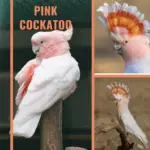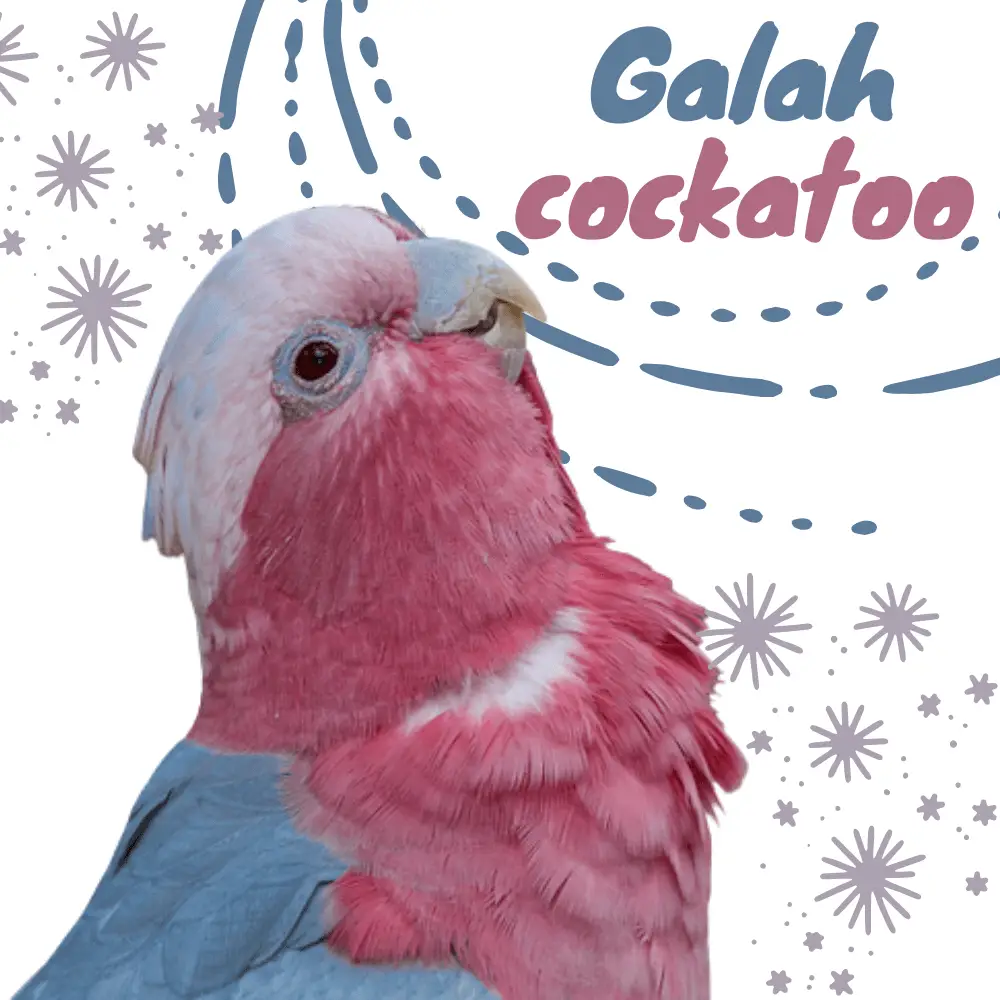
Galah Cockatoo(eolophus roseicapilla) 35–36 cm; male 345 g, female 311 g. Very distinctive medium-small cockatoo; plumage quite unlike that found in any member of closely related Cacatua, although both C. leadbeateri and C. moluccensis have varying degrees of pink suffusion.
Medium-grey with a deep pink face, neck, nape, and underparts, and a pinkish-white cap; periophthalmic ring carunculated and larger in male; male has the dark brown eye, female pink. Juvenile and immature both have brown eyes.
Races separated mainly on size and color of periophthalmic ring: N race kuhli smaller than the other two; E race albiceps has to crown and nape white with pink tinge only at the base of feathers; periophthalmic ring greyish white innominate, pink in other two races.
- LC Least Concern
- Names (15)
- Subspecies (3)
Systematics History
Original type locality not clearly specified, leading to confusion as to which of races was nominate form; type specimen formerly thought to be from E Australia, with W populations awarded race assimilis, but the discovery that specimen belonged to W race led to the necessary revision of nomenclature.
Has hybridized in the wild with Cacatua leadbeateri and C. sanguine. Proposed form howei (described from C Australia) regarded as representing intergrades between nominate and albiceps. Three subspecies are currently recognized.
Subspecies
SUBSPECIES
Eolophus roseicapilla kuhli Scientific name definitions
Distribution
N Western Australia (Kimberley) E to N Queensland.
SUBSPECIES
Eolophus roseicapilla roseicapilla Scientific name definitions
Distribution
W and WC Australia E to S Northern Territory.
SUBSPECIES
Eolophus roseicapilla albiceps Scientific name definitions
Distribution
EC and E Australia W to the Simpson Desert and S to Tasmania.
Distribution
Editor’s Note: Additional distribution information for this taxon can be found in the ‘Subspecies’ article above. In the future, we will develop a range-wide distribution article.
Galah Habitat
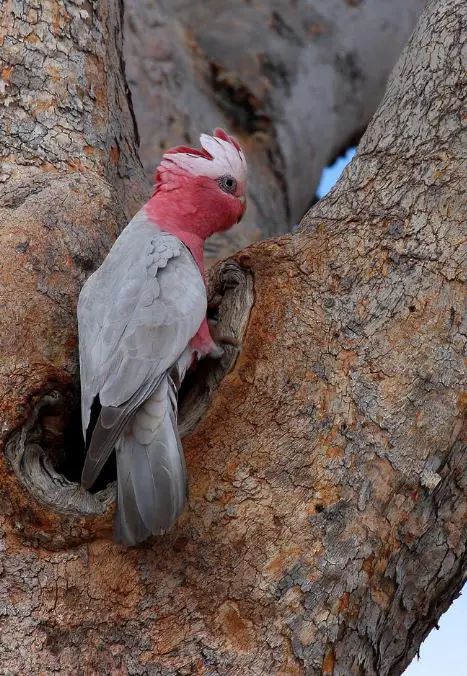
galah cockatoo
Originally occurred in woodland and grasslands of semi-arid and arid Australia; however, with the considerable expansion of human settlement, present species has found agricultural cropland and suburban parks suitable alternative forms of habitat and has expanded its distribution to the coast in most places.
Galah Movement
Sociable, and usually found in large flocks of up to 1000 birds. Large flocks flying high in tight formation appear to be able to confuse raptors successfully.
When moving to forage areas, several pairs may fly together and can travel several kilometers to a favorite feeding site.
Young Galah Cockatoo more than 100 days old tend to disperse widely, wandering in juvenile flocks; this probably aided the spread of species into Wheatbelt and to the coast.
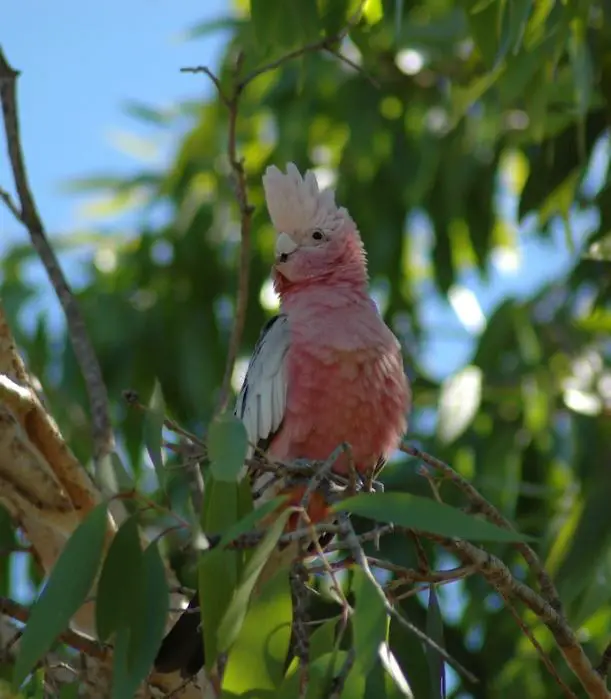
galah cockatoo
Galah Food
Cereal grains, and sunflower and sorghum seed all eaten; when nesting, prefers green seeding Erodium. Eats a wide variety of seeds gathered on the ground, usually feeding in flocks of 10–1000 birds.
When food is abundant, as in most summers, generally feeds twice a day, morning and evening, but drinks only once; in winter, when food is in short supply, birds forage for most of the day.
Will undo stitching on bagged wheat in order to get at grain, and will fossick for undigested seeds in cattle and horse feces. Flies strongly and very fast, and so is able to travel a long way between roost and food source.
Galah Sounds
Flight call is a short two-noted, somewhat muffled screeching “chee-chuh” or similar. When perched, the vocabulary is more diverse, with most notes having a similar tonal quality to flight calls. An alarm call a harsh husky drawn-out “khEh”.
Galah Breeding
Laying Aug–Nov throughout most of the range, but earlier in N tropics. Several pairs may breed in the same patch of trees within 10–80 m of each other.
The thick bed of freshly cut leafy branchlets is prepared in a hollow 16–700 cm deep; these hollows are defended throughout the year, and most pairs roost nearby every night.
2–6 eggs (mean 4·3), laid at intervals of 2–3 days; after 3rd or 4th egg laid, male and female incubate in turn for 22–26 days; chick has sparse pink down;
nestlings remain in the hollow for 7 weeks, and are fed by both parents; for the first 8–10 days they are brooded by both parents in turn; because eggs hatch asynchronously, nestlings tend to vary in size and the brood may fledge over several days;
fledging averages 49 days (45–59). Fledgling able to fly competently when it leaves the nest and is taken by parents to a crèche in a nearby patch of trees;
there they are fed until all their siblings join them; whilst in crèche, they learn elements of fast, cohesive flock-flying, and perfect their landing skills, which are lacking at first;
parents continue to feed their young in juvenile flocks for less than 2 months; these flocks tend to drift away from the breeding area, effectively separating young from their parents by the time they are c. 100 days old;
one persistent pair flew 16 km from their nesting hollow, where they had roosted, to feed their young in a juvenile flock. Success: 82% of eggs hatch; 59% of all hatchlings fledge.
Reproduction
In the North, breeding takes place between February and June.
Durante el courtship, the male struts before his partner making bows, shaking his head, producing low notes, and demonstrating a repertoire of stunts.
Most of the time, the nest is a natural cavity in a Eucalyptus, between 2 y 20 meters above the ground.
The Galah Cockatoo You scratch the bark of the trunk around the hole which is the entrance to the nest. This practice is sometimes excessive that they cause the death of the tree. Cliffs can also be used as a nesting place.
Typically, pairs likewise mate for life and are loyal to the same nesting sites for several consecutive years.
Spawning includes 2-6 eggs. The female lays an egg every one or two days and the incubation period is about 25 days. Both parents incubate at the same time, and they provide assistance to the young.
They feed their young every 3 hours, sounding their beak to regurgitate food.
While they are able to fly quickly when they emerge from the nest, their survival rate is low. The first days after the flight, they return to the nest for the night. Shortly thereafter, a large nursery forms where the parents are feeding their young.
From time to time, the Galah Cockatoo has a second brood in a season.
Galah Cockatoo For Adoption
SOURCE: The Dodo
Galah Cockatoo’s life expectancy once was around 15-18 years, probably due to popular ignorance of poor diet of your needs. Today is talking about animals for up to 40 years of life.
Conservation Status
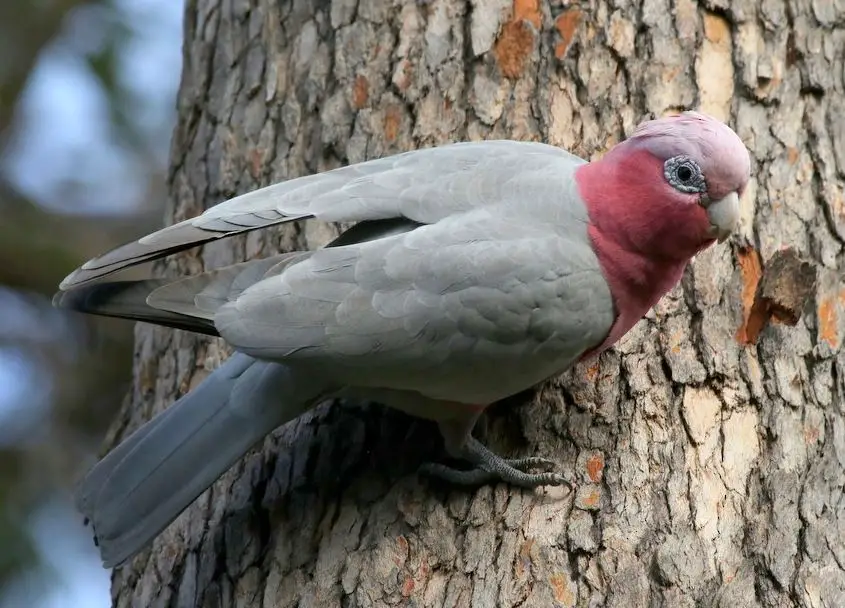
Galah Eolophus
Conservation status on BirdlifeLC Least Concern
Galah Cockatoo Not globally threatened. CITES II. Common and secure; distribution has increased over the last 50 years. Regarded as pests of cereal crops by farmers, and killed under permit in some areas.
Trapping and nest robbing for aviary trade are commonplace, but ineffective as an agricultural control measure. The sale of easily trapped young birds and their transport to another state for sale (e.g. from South Australia to Western Australia), which unfortunately is legal, has led to some genetic confusion:
birds of this species, which make bad, biting pets, are often released by their disappointed temporary owners thousands of kilometers outside their natural range, and will readily mate with local birds.
Galah Cockatoo Price
If we opt for a cockatoo for home, a rose can be the best alternative: less demanding than its sisters, a little less noisy and, If we have chosen a female, We have the sweetness and docility secure.
Its market prices are around 1000 $.


